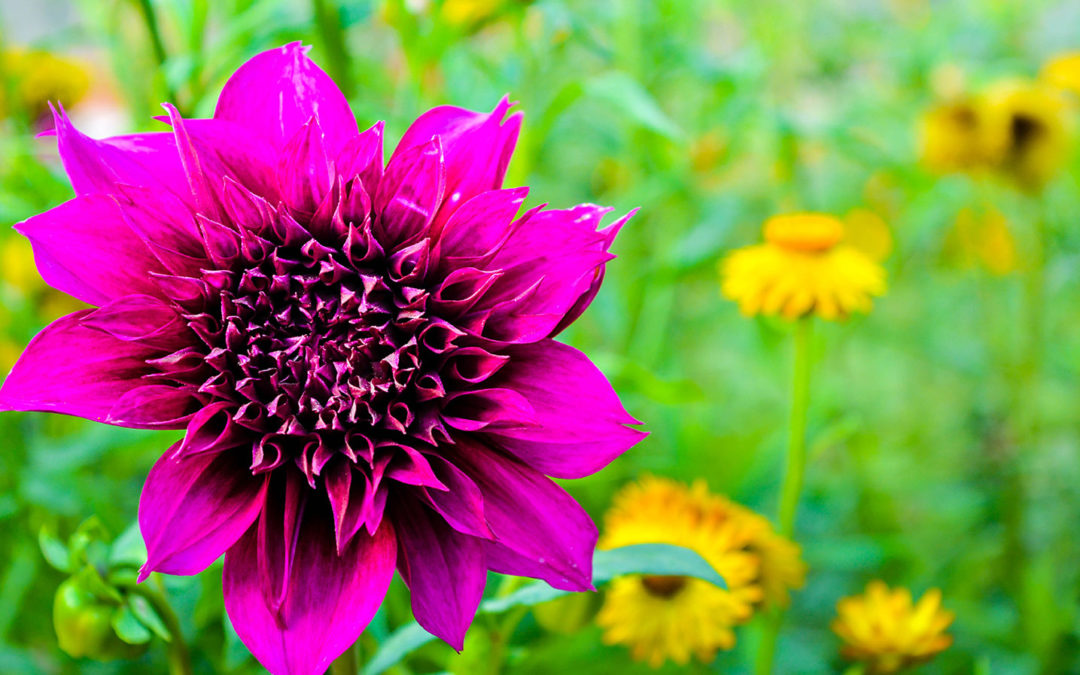The Vagaries of Mother Nature Cannot be Regulated.
Outdoor Power Equipment Institute Urges Smarter Spring Landscaping Choices.
Across the nation, many regions are finding spring is arriving ahead of schedule. As homeowners and gardeners grapple with what, when and where to plant, the Outdoor Power Equipment Institute (OPEI) reminds us all about the importance of making smart landscaping choices for the long-term. Mother Nature is not static, predictable or fixed. California’s environment is the prime example of this unpredictability, which spent the last few years in drought and is now receiving historic rain and snow. For most of California, their drought is over.
“California gave us the greatest lesson. It showed that regulating the landscaped environment isn’t smart,” says Kris Kiser, CEO and President of OPEI. “In a well-intentioned effort to save water, they experimented with replacing living landscapes with rocks, mulch and honest-to-God ‘plastic grass.’ Unfortunately, due to this short-term experiment, in those areas where landscaping and turfgrass were removed they are no longer capturing and filtering rainwater or holding it on site for the trees and plants to use.”
California state and local governments paid homeowners to replace their living landscapes, including their turfgrass, with mulch, rocks, cactus and plastic grass. California auditors later discovered this one-size-fits-all approach was the least effective water-saving measure. Now, in an extreme turn-around, the Golden State is dealing with torrential rains, heavy snowfall, mudslides and storm water runoff. Denuded landscapes don’t capture water or store it capably.
“As homeowners get ready to choose plants for spring, it’s imperative we learn from California’s mistakes,” he says. “If they’d seen their lawns and landscapes as an appropriate use of water and an investment in nature and home habitat, California cities could have helped save some of their dying, city canopy trees, which get watered along with yards and green space. And all those ‘drought-friendly’ yards of nothing but mulch? They’re washing away.”
To sum up a smarter landscape approach, Kiser says, “Plant for forever—not for short-term weather changes.”
OPEI encourages homeowners, gardeners and commercial facility managers to keep these smart landscaping tips in mind when planting this spring:
Plant a living landscape that breathes. It creates the oxygen we need and sequesters carbon.
Follow the “right plant, right place” rule. Put in living trees, shrubs, grasses and flowering plants that are right for your climate zone. Once established, Mother Nature will weather climate changes.
Remember wildlife in your planting choices. Add flowering plants to support pollinators like birds, bees and butterflies. Our yards, parks, schoolyards and other green spaces connect and form wildlife corridors.
Plant for your lifestyle. If you have kids and pets, remember our yards are safe spaces for families, kids and pets.
Put in a mix of adaptive and native plants that can handle people traffic as well as provide food and habitat for wildlife.
Don’t over water. Plants and trees will grow stronger and work harder, creating deeper, vertical roots, if they need to seek water.
Let plants go dormant in drought conditions. They will “green back up” when the rains come.
“Plants are smarter than we are when it comes to natural, cyclical weather events,” says Kiser. “We just need to get out of the way. Make the right plant and tree selections for your climate zone. Once established, they’ll do it on their own. They’ll spring back up when the rains return. And the rain always returns.”
Our living landscapes are imperative to human and wildlife health. They produce oxygen, sequester carbon, lower urban heat, capture and filter rainwater, prevent soil erosion and capture dust and particulates. They are urban habitat for us, our pets and nature’s wildlife. Ours is a shared existence. A fifty feet by fifty feet square of ordinary turfgrass produces enough oxygen for a family of four, and green infrastructure protects communities from natural disasters, including flood and drought.
“Take a lesson from the California experiment. We’ve seen, first-hand, what happens when government regulates too much and forces people to change their living landscapes for short-term realities,” adds Kiser. “The health of our communities depend on us getting smarter about working with nature. Plant for the future—our future.”
About OPEI
The Outdoor Power Equipment Institute (OPEI) is an international trade association representing more than 100 power equipment, engine and utility vehicle manufacturers and suppliers. OPEI is the advocacy voice of the industry, and a recognized Standards Development Organization for the American National Standards Institute (ANSI) and active internationally through the International Organization for Standardization (ISO) and the International Electrotechnical Commission (IEC) in the development of safety and performance standards. OPEI is managing partner of GIE+EXPO, the industry’s annual international trade show, and the creative force behind the environmental education program, TurfMutt.com. OPEI-Canada represents members on a host of issues, including recycling, emissions and other regulatory developments across the Canadian provinces. For more information, visit www.OPEI.org.

